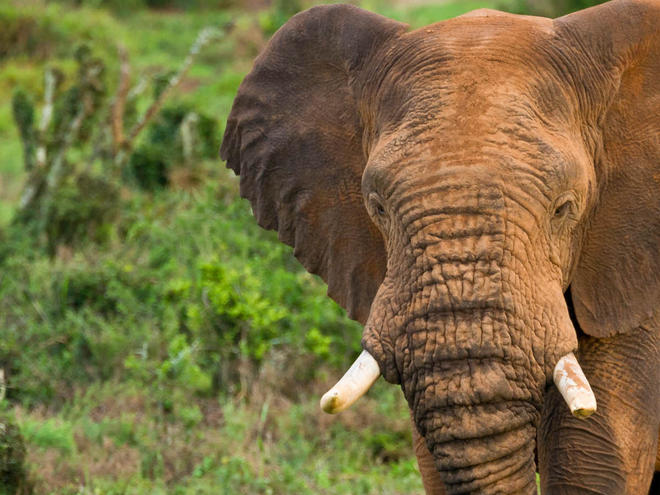
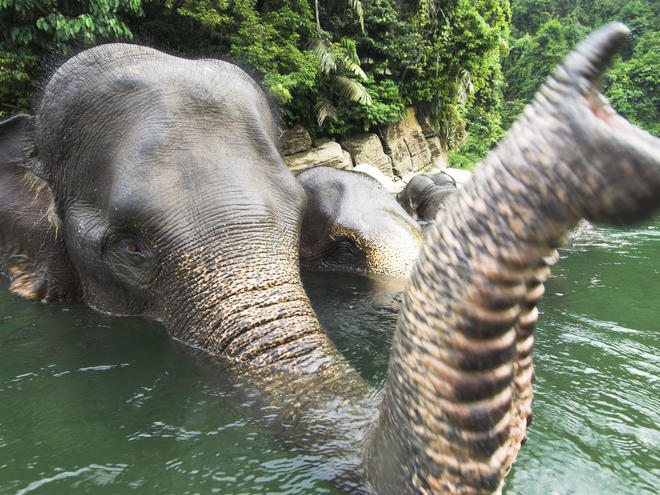
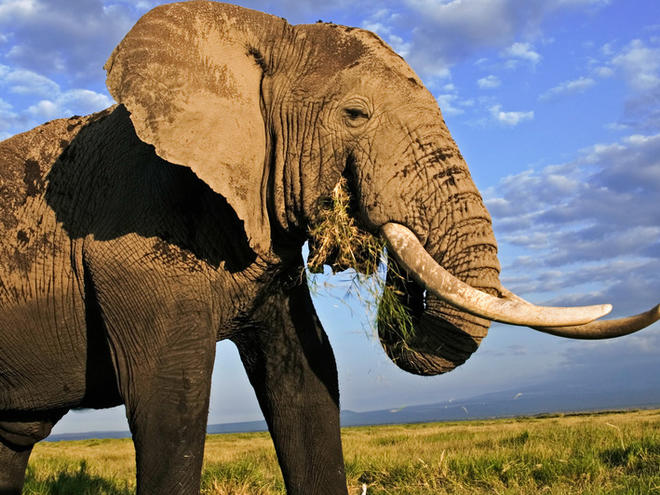
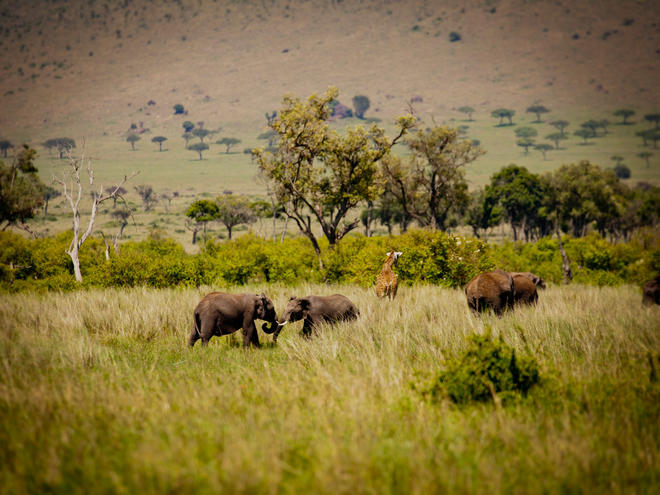
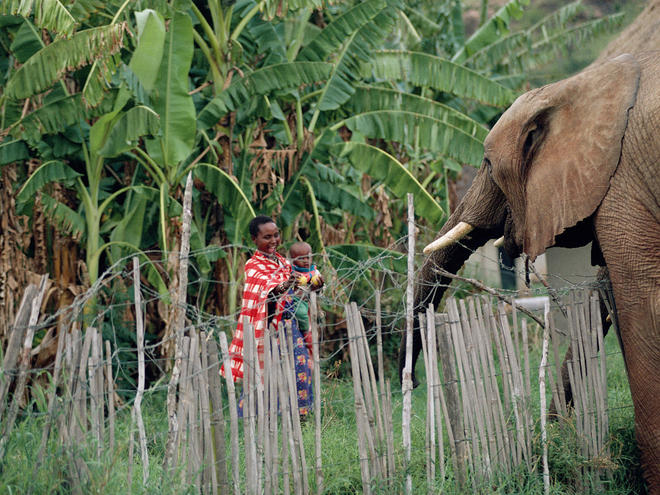
Elephants, found in both Africa and Asia, are vital to maintaining the rich biodiversity of the ecosystems that they share with other species.
WWF focuses its conservation efforts on saving the world’s largest mammal in sites across both continents. We work with wildlife managers, governments and local communities to stop poaching, reduce human-wildlife conflict and improve monitoring and research.
Here’s a look at some interesting elephant facts.
1. How many muscles does an elephant trunk have?
An elephant trunk has up to 40,000 muscles in it. A human has more than 600 muscles in his/her entire body. Elephants use their trunks to pick up objects, trumpet warnings and greet one another.
2. What's the difference between Asian and African elephants?
There are more than 10 physical characteristics that differentiate Asian and African elephants. For example, Asian elephants are smaller than their African brethren, and their ears are straight at the bottom, distinct from the large fan-shaped ears of the African species. Only some male Asian elephants have tusks, while African elephants—both male and female—grow tusks.
3. Do elephants have a dominant tusk?
Elephants are either left- or right-tusked, and the dominant tusk is generally smaller because of wear and tear from frequent use.
4. How often do elephants give birth?
Elephants have the longest gestation period of any mammal—22 months. Females give birth every four to five years. Matriarchs also dominate the complex social structure of elephants and calves, while male elephants tend to live in isolation or in small bachelor groups.
5. How do elephants help their ecosystem thrive?
Elephants are important ecosystem engineers. Many tree species in central African and Asian forests rely on seeds passing through an elephant's digestive tract before they can germinate.
6. What's the most urgent threat to elephants?
Today, the greatest threat to African elephants is wildlife crime, primarily poaching for the illegal ivory trade, while the greatest threat to Asian elephants is habitat loss and resulting human-elephant conflict. WWF uses our expertise in policy, wildlife trade, advocacy, and communications in an effort to stop wildlife crime and illegal ivory trade, reduce human-elephant conflict, and protect elephant habitats. You can help, too, by signing on to stop wildlife crime.
7. How does WWF help humans and elephants peacefully coexist?
As wild spaces shrink, elephants and humans are forced into contact and often clash. WWF helps prevent and mitigate elephant-human conflict through various programs, including electric fences to protect crops and trained response teams to safely drive wild elephants away from farms and human habitation.
Published August 10, 2018 at 05:00AM
No comments:
Post a Comment